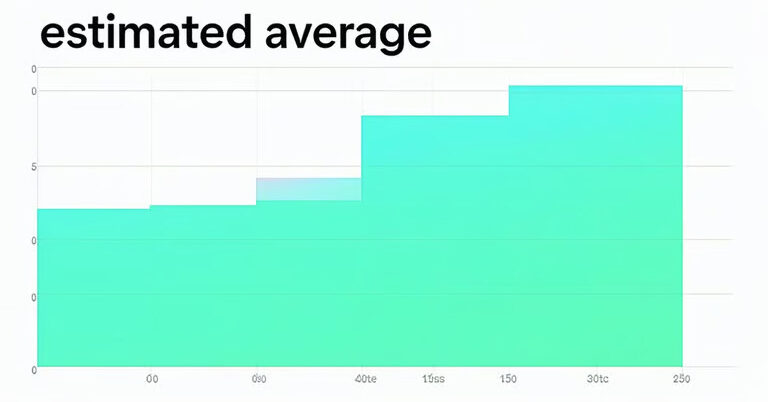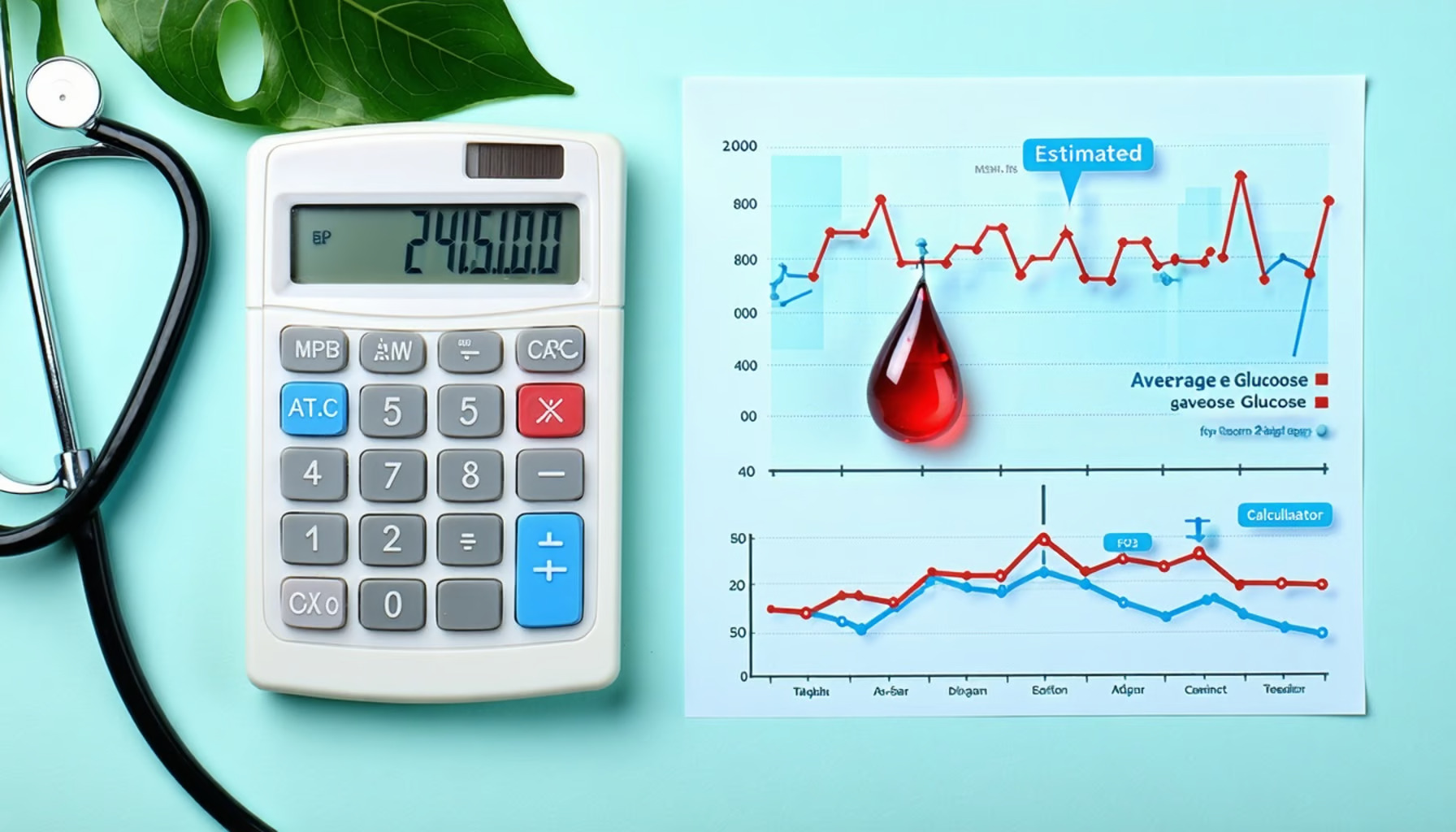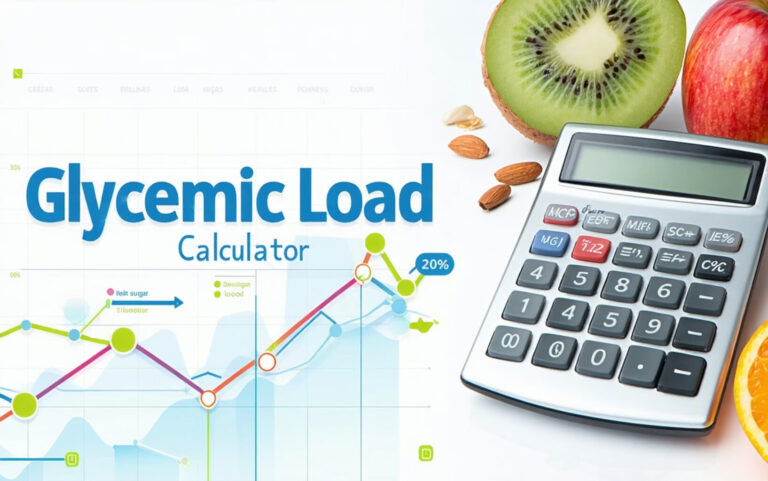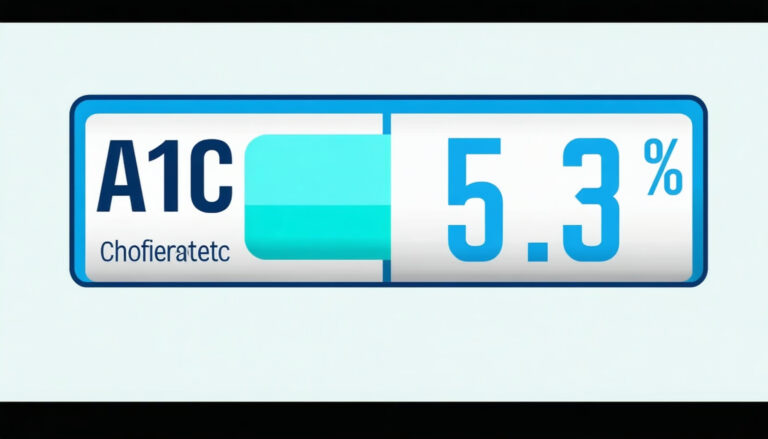Our Guide to the Estimated Average Glucose Calculator
Navigate blood sugar levels with our guide to the estimated average glucose calculator. Easy steps, clear results!
Figuring A1C Levels?
Figuring out A1C levels is a big deal for folks dealing with diabetes. We’re gonna get into how A1C and eAG are connected and why A1C tests need to happen on the regular.

A1C and eAG Relationship
So, there’s this neat tool called the estimated average glucose (eAG) calculator that the American Diabetes Association (ADA) says we should use. It helps turn A1C results into numbers that match daily blood glucose readings (you know, those mg/dL or mmol/L thingies). It makes it way easier for anyone to get a grip on their sugar levels.
Here’s how you turn A1C into eAG: [ \text{eAG}(\text{mg/dL}) = 28.7 \times \text{A1C} – 46.7 ]
Quick cheat sheet:
| A1C (%) | eAG (mg/dL) |
|---|---|
| 6 | 126 |
| 7 | 154 |
| 8 | 183 |
| 9 | 212 |
Borrowing info from the American Diabetes Association.
Getting how A1C connects to eAG means knowing the trend of blood sugar levels over time. Higher A1C numbers? Yeah, that means the blood sugar control is not so hot.
Importance of A1C Testing
That A1C test shows the percentage of red blood cells stuck with sugary hemoglobin, painting a picture of what blood sugar looked like for the past few months. For those with diabetes, it’s super important to check if the treatment’s doing its job.
Bringing down A1C can really cut the risk of long-term stuff like nerve trouble, eye problems, kidney issues, and heart hassles (Accu-Chek). The ADA says most grown-ups who aren’t pregnant should aim for A1C below 7%, or an eAG of under 154 mg/dL.
| A1C (%) | Risk of Diabetic Issues |
|---|---|
| > 9% | High |
| 8% – 9% | Moderate |
| < 7% | Low |
For more tricks to handle diabetes, check out our gmi to A1C calculator and glycemic load calculator. Regular testing and knowing your A1C levels really puts power in your hands to make the right calls and keep sugar levels steady.
Using the eAG Calculator
We know keeping tabs on our A1C numbers is pretty much step one for managing diabetes. But have you ever thought about what your everyday glucose levels are saying? The estimated average glucose (eAG) calculator helps us see where we stand by connecting those A1C percentages with what we’re seeing day to day with our blood sugar.
Calculating Your eAG
Alright, let’s get to it. To use an estimated average glucose calculator, you start with your A1C result in hand. Converting that to eAG isn’t rocket science—just a bit of math:
[ \text{eAG} = 28.7 \times \text{A1C} – 46.7 ]
Say your A1C is 7%. Here’s how the calculation goes:
[ 28.7 \times 7 – 46.7 = 154 \text{ mg/dL} ]
And just for fun, here’s a cheat sheet for some standard A1C levels and the eAGs they translate to:
| A1C (%) | eAG (mg/dL) |
|---|---|
| 6 | 126 |
| 7 | 154 |
| 8 | 183 |
| 9 | 212 |
| 10 | 240 |
Interpreting Your eAG Results
Once you’ve got your eAG figured out, it’s time to see what it really means for your diabetes game plan. This number is like a sneak peek into your average blood sugar over the last 60 to 90 days.
Most folks with diabetes aim for an A1C of 7% or less, which lines up with an eAG under 154 mg/dL (Accu-Chek). Chat with your healthcare provider about what these numbers mean for you and your management strategy.
Want more nerd time with A1C and eAG results? Check out our gmi to a1c calculator and other cool stuff like the diabetic macro calculator, glycemic load calculator and homa-ir calculator. These tools have your back for a full picture of glucose levels and what that means for you.
Image Credit






